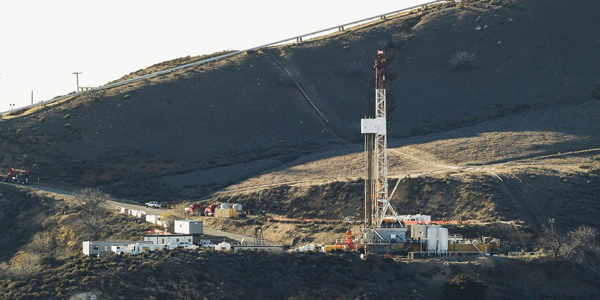By Jason Fordney
CAISO has proposed to make permanent its practice of curtailing gas burn at some power plants and using certain market tools to reduce the reliability risk posed by ongoing pipeline limitations stemming from the closure of the Aliso Canyon gas storage field.
Set to expire at the end of November, the ISO’s temporary mitigation measures have been “particularly effective,” it said in its “Phase 3” straw proposal seeking to extend the life of those provisions. Staff will discuss the proposal during a June 7 stakeholder call.
“CAISO proposes to make market constraint limiting the maximum gas burn of a group of generators a permanent operational tool that can be used throughout the CAISO and Energy Imbalance Market balancing areas,” the ISO said in the proposal.
The ISO said the measures are necessary because the withdrawal limitations at Aliso Canyon are set to be in effect for most of this year because of a large-scale leak that was discovered at the Southern California facility in October 2015 and plugged in February 2016.
Southern California Gas — operator of both the storage facility and regional pipeline network — recently warned state officials that the withdrawal restrictions might lead to gas supply shortages in summer and winter peak seasons. (See California Grid Emergency Comes Days After Reliability Warning.)
FERC last year agreed to extend the measures, which were described as temporary when first implemented ahead of last summer. (See FERC OKs One-Year Extension for CAISO’s Aliso Canyon Gas Rules.)
The commission’s approval allowed CAISO to enforce a market constraint that limits the minimum and maximum amount of gas that can be burned by generators in the affected area during periods of low gas supply. Generators have demonstrated they can regulate their minimum burns by lowering the price of their bids into the real-time electricity market.
Under the new proposal, the ISO would also have permanent authority to override its “dynamic competitive path” assessment when it determines that a transmission path is no longer competitive in the face of a gas constraint, and to suspend virtual bidding to prevent market manipulation.
CAISO also proposed to make permanent provisions that provide scheduling coordinators with two-day-ahead advisory schedules and allow gas-fired generating units to incorporate more timely fuel prices into their market offers.
Up for temporary extension are provisions that give generators the ability to reflect gas cost expectations into day-ahead bids by using an approximation of next-day gas prices, which are published after the ISO’s morning day-ahead market runs. ISO rules typically require generators to incorporate the previous day’s next-day gas prices into energy bids.
Comments on the straw proposal are due June 14, with CAISO’s Board of Governors set to vote on a final proposal in July. The EIM Governing Body will also review the measures under its advisory role.
Some stakeholders have told CAISO that they do not wish for the measures to be substitutes for permanent market reforms. The ISO said it has used the gas burn constraints sparingly and has described them as “a valuable operational tool.”



